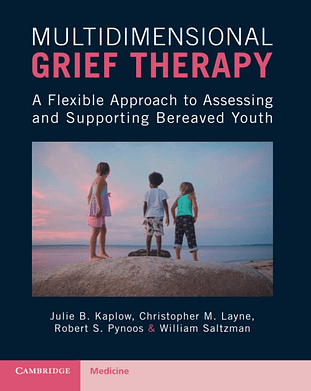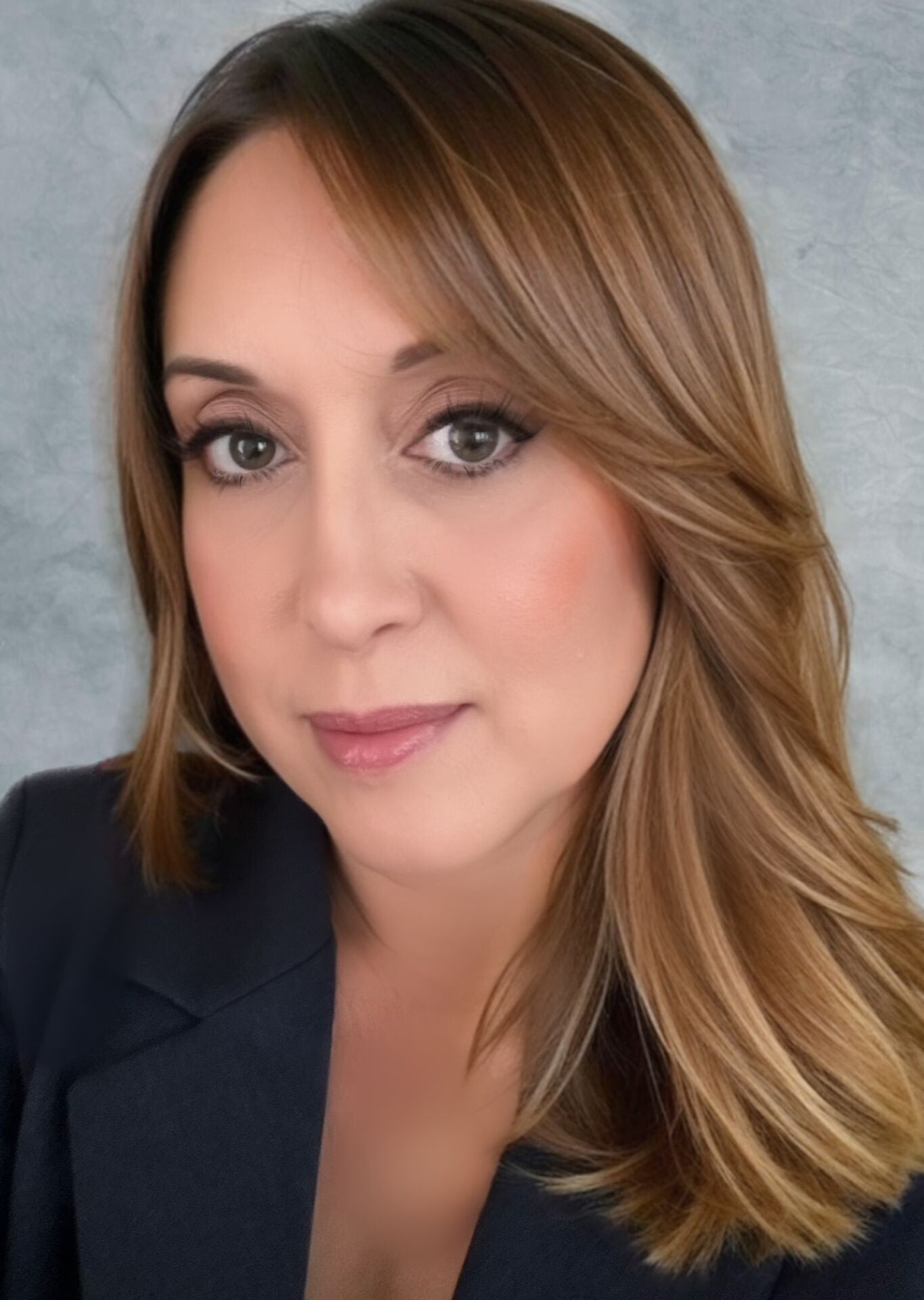One Size Does Not Fit All: The Meadows Institute’s Dr. Julie Kaplow Discusses New Book on Supporting Bereaved Children
Detail page

Dr. Kaplow’s new book, “Multidimensional Grief Therapy: A Flexible Approach to Assessing and Supporting Bereaved Youth”
This month, to help us commemorate National Children’s Grief Awareness Month, we were privileged to sit down for a Q&A with author and Trauma and Grief Center Executive Director Dr. Julie Kaplow about her new book, “Multidimensional Grief Therapy: A Flexible Approach to Assessing and Supporting Bereaved Youth.”
Developed after decades of research and clinical work with children by Kaplow and a team of distinguished scholars, the book, now available from Cambridge University Press, recognizes that a “one-size-fits-all” approach fails to meet the unique needs of different bereaved children and provides easy to use, step-by-step guidance for clinicians, parents and caregivers of children on how to support adaptive grieving processes and identity and treat unhelpful grief reactions.
What follows are highlights from our conversation:
Q: Congratulations to you and your co-authors on the publication of “Multidimensional Grief Therapy.” Who is the audience for this book?
This book is written for caring adults who provide support to bereaved children. The first part (Phase 1) of the intervention is designed for children who are struggling with typical grief-related challenges that most bereaved youth face. For this reason, Phase 1 can be delivered by an adult who works with bereaved children in almost any setting, including schools, bereavement support programs and faith-based organizations. The second part of the intervention (Phase 2) is designed for youth who are feeling “stuck” in their grief, are having difficulty coping, and require a more intensive level of support. Phase 2 is usually delivered by an adult who has a mental health background (e.g., counselor, social worker, psychologist).
Q: What is Multidimensional Grief Therapy and what is the theory behind it?
Multidimensional Grief Therapy (MGT), is an assessment-driven intervention designed to reduce unhelpful grieving (grief that keeps kids “stuck” and unable to adjust), promote helpful grieving (grief that helps kids to feel and cope better after a death), and help bereaved children and adolescents (ages seven to 18) lead healthy, happy, productive lives. MGT is based on a theory called multidimensional grief theory that my colleagues, Chris Layne, Bob Pynoos, and I, have been developing and testing for the last two decades. Our theory describes three primary grief-related challenges (or dimensions) that we have often observed among bereaved youth: 1) separation distress, which involves really missing the person and wishing that they would return; 2) existential/identity distress, which involves feeling lost without the person or feeling unsure how to live without them; and 3) circumstance-related distress, which involves being very preoccupied with the way the person died. Multidimensional grief theory also supports the notion that helpful and unhelpful grief reactions can and do co-exist.
Q: Is MGT specifically tailored for children and adolescents? What makes it unique and what are its strengths?
We designed MGT specifically for children and adolescents, as we know that childhood grief looks different than adult grief. It’s unique in the sense that it is the nation’s first evidence-based, grief-focused intervention for children and adolescents that directly addresses the three primary dimensions of grief as described by multidimensional grief theory. MGT has several strengths including the fact that the exercises are tailored for children and adolescents of different ages and cultures. MGT also uses a “strength-based” approach, meaning that the book not only focuses on reducing children’s distress, but also harnessing “healthy or helpful” grief reactions that can be beneficial to children over time. Finally, MGT is grounded in the latest research on how children cope with loss and what adults can do to help them.
Q: Is MGT flexible enough to apply to a wide range of grief reactions in children and adolescents, from general mental health and wellness promotion to specialized mental health therapeutic services for those in the greatest need and at the greatest risk?
Yes. MGT is designed with this “continuum of care” in mind, knowing that many bereaved children will just need some basic guidance and support after a death, whereas others may need a higher level of care, requiring the help of a mental health professional. The exercises found within MGT range from basic coping skills to more in-depth processing of extremely challenging grief reactions.
Q: A core assumption of multidimensional grief theory is that grief is inherently beneficial yet often taxing process of dealing with life after loss. Is there such a thing as “good grief”?
Yes. In fact, the exercises in the book are designed to harness the “good grief” that naturally occurs in most children after a death. Examples include finding healthy ways to feel connected to the person who died, living the legacy of the person, making meaning of the loss, and transforming the circumstances of the death into something that can prevent others from suffering in the same way (e.g., raising money for breast cancer, becoming an ER doctor or firefighter, participating in a suicide walk, etc.).
Q: What about maladaptive, or unhelpful grief? In addition to promoting adaptive grief, does this book contain grief-focused therapeutic interventions for those who are “stuck” in their grief?
Yes. We know that some bereaved children will need more intensive support after a death, especially if a death occurs under traumatic circumstances or if children have experienced multiple losses. The exercises in Phase 2 of MGT are designed to help youth process some of the more difficult grief reactions that are common following traumatic deaths such as homicide, suicide, drug overdose deaths, etc. The book also includes guidance for how parents/caregivers can assist their children after such losses.
Q: What is difference between bereavement and trauma? Can they co-occur simultaneously in young people’s lives? If so, how does MGT approach this interplay between grief and posttraumatic stress reactions?
A trauma, or a traumatic event, is a real or perceived threat to one’s life, or the life of a loved one, that causes terror, horror, helplessness and/or fear. Bereavement is the experience of deprivation or loss by death. Trauma often leads to posttraumatic stress, whereas bereavement often leads to grief. Bereavement can be “traumatic” to surviving family members, and cause posttraumatic stress, especially if it occurs under circumstances that are terrifying, such as homicide. MGT contains exercises that are designed to address both posttraumatic stress and grief, as they do commonly co-occur, but require specific and unique exercises. We often find that the posttraumatic stress must be addressed before we move to grief processing, as many children will become too distressed processing the death of a loved one if they haven’t fully dealt with the traumatic aspects of the loss.
 Dr. Julie Kaplow, executive director of the Trauma and Grief Center at the Meadows Mental Health Policy Institute
Dr. Julie Kaplow, executive director of the Trauma and Grief Center at the Meadows Mental Health Policy Institute
Q: This book argues that caregivers of children, not just clinicians, play a powerful role in supporting bereaved youth. How can caregivers promote children’s adaptive grief?
Parents and caregivers can be key “grief facilitators,” meaning that they can model for children what “healthy grief” looks like, and they can also provide guidance to help their children cope with the loss. Our research has shown that the three most important things that parents can do to help their children after a death is to 1) validate their feelings; 2) be there to listen when they are ready to talk; and 3) provide structure so that children can maintain a sense of stability when other parts of their lives may feel chaotic.
Q: Does faith and faith communities have a role to play in supporting bereaved children? The medical model of psychology does not make much room for the spiritual dimensions of grief or the spiritual needs of children, if any. Should that change?
Most bereaved children have active spiritual lives that often involve thinking about and wondering about the presence of the deceased person. For example, they often have questions such as, “Can they still hear me? Can they see me? Are they watching over me?” They may also have comforting spiritual beliefs (e.g., “I believe that my dad is my guardian angel now” or “I believe that I’m going to see him again in heaven”) that are actually helpful to them and can be harnessed as important coping strategies. Most training programs in mental health professions like psychology or social work do not cover how to help bereaved children to explore and address these questions. In fact, they are often taught to avoid any “religious” or “spiritual” issues. I believe this needs to change, particularly when these are questions/concerns/thoughts that bereaved youth are usually left to grapple with on their own. When we help to give voice to these issues, most children feel validated and relieved.
Q: How can we learn more about MGT and your work at the Trauma and Grief Center?
I will be discussing MGT and the book at a live launch event hosted by the Institute this Thursday, 11/2 at 1:00 p.m. Central Time. The live webinar is free and open to the public. Click here to register. Readers can learn more about the Trauma and Grief Center, and support our mission, by visiting our website and following us on social media. Please be in touch!

